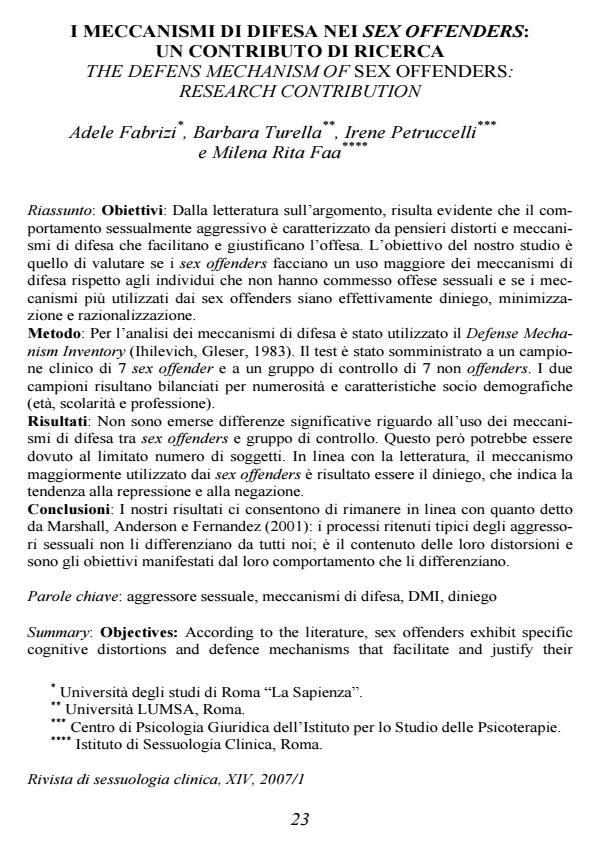The defens mechanism of sex offenders: research contribution
Journal title RIVISTA DI SESSUOLOGIA CLINICA
Author/s Irene Petruccelli, Adele Fabrizi, Milena Rita Faa, Barbara Turella
Publishing Year 2008 Issue 2007/1
Language Italian Pages 12 P. 23-34 File size 595 KB
DOI
DOI is like a bar code for intellectual property: to have more infomation
click here
Below, you can see the article first page
If you want to buy this article in PDF format, you can do it, following the instructions to buy download credits

FrancoAngeli is member of Publishers International Linking Association, Inc (PILA), a not-for-profit association which run the CrossRef service enabling links to and from online scholarly content.
Objectives: According to the literature, sex offenders exhibit specific cognitive distortions and defence mechanisms that facilitate and justify their crimes. This study aims at assessing if sex offenders show more evident defence mechanisms compared to subjects who have not committed any offences and whether they mostly utilize denial, minimization and rationalization. Methods: The Defense Mechanism Inventory (DMI) by Ihlevich and Gleser (1983) was administered to 7 sex offenders and to a control group of 7 non-offenders. The two groups were balanced as to socio-demographic characteristics (age, education, job). ANOVA was performed on the five scales of the DMI. Results: No significant difference was found between sex offenders and control group as to activation of defence mechanisms. This result might be due to the small number of subjects. In line with the literature, the mechanism mostly utilized by sex offenders is the reversal (REV), indicating a propensity to repression and denial. Conclusions: Our results seem to confirm the claim by Marshall, Anderson and Fernandez (2001) that sex offenders are not different from the general population for their presumed typical mechanisms. It is rather the content of their cognitive distortions and the target of their behaviour that make them different from non sexoffenders. Key words: sex offender, defense mechanisms, DMI, denial
Irene Petruccelli, Adele Fabrizi, Milena Rita Faa, Barbara Turella, I meccanismi di difesa nei sex offenders: un contributo di ricerca in "RIVISTA DI SESSUOLOGIA CLINICA" 1/2007, pp 23-34, DOI: